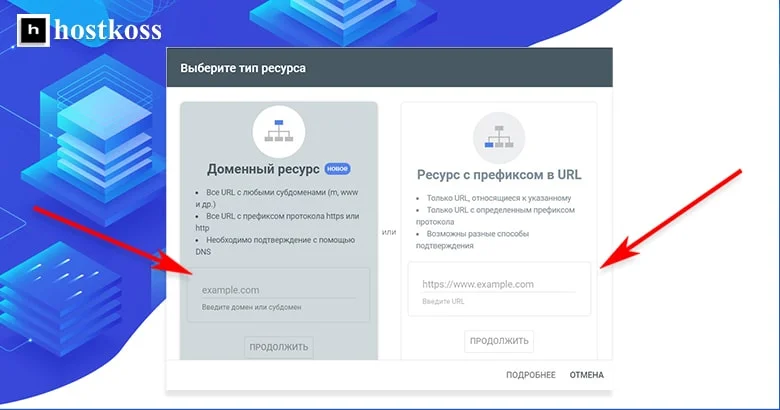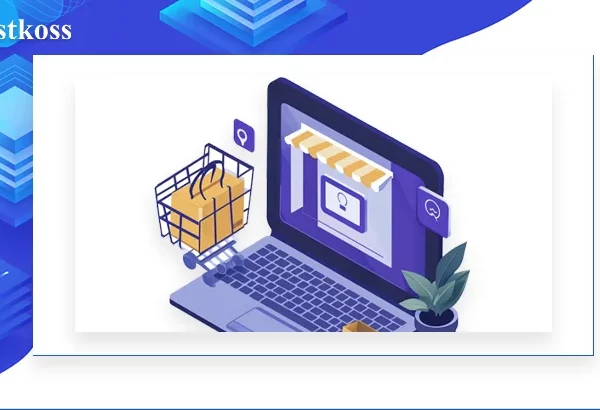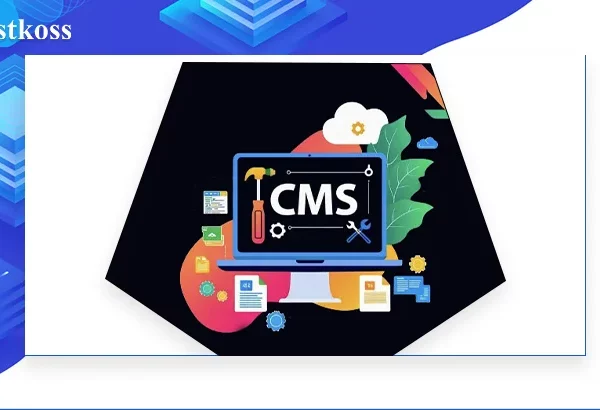Ever wondered how Google knows what to look for when you type in “the most delicious pizza recipe” or “how to teach a cat to dance the foxtrot” in its address bar? Well, that’s where Google indexing comes in – Google’s secret recipe for always finding exactly what you’re looking for, whether it’s a delicious pizza recipe or a dancing cat.
Indexing helps Google understand what’s on each page. Your website is included in this index, where the real magic of rankings and keywords happens.
At the end of the day, when you search for something, Google just looks at its index and gives you what it thinks is most delicious. So, if your website is not yet in this index, it’s time to think about how to make it even more delicious for Google.
- The importance of Google indexing for website visibility
- How Google finds and indexes new websites
- Understanding the basics of Google’s algorithm and rankings
- Website optimization for indexing in Google
- Google’s artificial intelligence and natural language processing
- Local packs and Google’s local search algorithm
- Showcase snippets and instant answers from Google
- Tireless improvement: Key steps to your website’s success in Google searches
- FAQ about Google indexing
The importance of Google indexing for website visibility
My experience in web development allows me to understand how important it is to optimize a website for search engines, in particular for Google.
First of all, indexing is the key stage for your web resource to appear in search results. Google interacts with billions of web pages, and if it doesn’t index your site, it simply won’t be included in search queries. This means that potential visitors will not be able to find your content, even if it contains useful information or products.
It is clear that indexing directly affects website traffic. When Google indexes your content, it allows it to include it in a variety of search results, providing more opportunities for potential visitors to find your site.
It is also important to note that the quality of indexing can affect the ranking of a website. If your web resource is properly optimized for search engines, it can positively mark it in the eyes of Google’s algorithms, which in turn will increase its position in search results.
The importance of Google indexing for website visibility is extremely high.
How Google finds and indexes new websites

Finding and indexing new websites for Google is a complex but well-established process that has its own stages and steps. To begin with, when a new website goes online, it does not mean that it has already been noticed by Google.
The first step is for the website owner to submit a request to Google for indexing. This can be done through Google’s Search Console webmaster tools. When the request is received, the crawling process begins.

A crawler is a program that automatically crawls the content of a website. When a crawler comes across a new website or changes to an existing one, it makes an entry in the Google database.
The next stage is indexing. This is where Google’s algorithms analyze the collected data and decide whether to add the website to the index. The uniqueness and quality of the content plays an important role here. Google prefers pages that have informative and interesting content.
Another important aspect is setting up the robots.txt file, which tells crawlers which part of the site should be ignored. This can be useful for removing pages with test or duplicate content from the index.
Another stage is link processing. When a website is indexed, Google takes into account the links to that site from other resources, which helps determine its authority and significance.
All of these steps interact with each other to form a network of processes that allow Google to efficiently find, index, and rank websites. This process is an integral part of how search engines provide users with access to relevant and high-quality information online.
Understanding the basics of Google’s algorithm and rankings
In the world of search engines, Google is a real giant. Its algorithm determines which pages you see when you search and in what order. I’ll reveal a little bit of the mysterious algorithm.
First, it is based on keywords. So, when you enter a query, Google searches for pages where these words occur most often. However, it’s not that simple – the algorithm takes into account other aspects.
One of the most important is authority. Google believes that if many other sites link to a particular page, it must have significant content. This helps in the formation of page rankings.
The context is also taken into account. The algorithm tries to understand what exactly you are interested in and select relevant results. For example, if you search for “How to cook pasta,” Google may show you recipes, but not a story about pasta.
However, the algorithm is constantly being updated. Google makes changes to improve search quality. Therefore, optimizing content for search engines is a task that requires constant improvement.
Understanding the principles of Google‘s algorithm helps to promote websites more effectively and provide users with relevant information. But don’t forget that technology is constantly changing, and you should keep up with the latest updates for successful online promotion.
Key factors affecting search rankings
Recently, there has been more and more talk about how important it is to understand and take into account the key factors that affect search rankings on the Internet. This is not only a matter of web technologies, but also a strategy for increasing online visibility.
It is hard to overestimate the impact of content on rankings. If your content engages users, increases their ownership, and solves their problems, it can significantly improve your position in search results. This is important not only for SEO, but also for creating quality support for your audience.
The technical optimization of your website is equally important. Loading speed, mobile friendliness, and security – all of these parameters affect how satisfied users are with your resource. Search engines are tuned to detect high-quality technical aspects of websites, and this can determine your place in the search results.
Attracting the right audience is also important. If your content is aimed at those who need it and it answers their questions, you will get more positive reviews and links. This affects the authority of your site in the eyes of search engines.
Considering all these factors, it’s important to keep a balance between technicality and content. By working on all aspects of optimization, you can improve your search rankings and make your content accessible to more users.
Website optimization for indexing in Google
I know how important it is to get noticed in the vast world of the Internet, especially when it comes to Google. I hope my tips will be useful to you if you want your website to rank high in search results.
Let’s start with keywords. It’s like a magnet for Googlebot. Make sure that your content contains keywords, but do it naturally, without overdoing it. Google appreciates natural and useful content.
You should pay attention to the sitemap. It is like a navigation map for search robots. Make sure your sitemap is clear and easy to understand. This will make it easier for your content to be indexed.
The technical side is also important. Make sure your site loads quickly. Google loves speed, and slow sites can lose places in search results.
One of the important recommendations is structured data. Use it to provide Google with additional information about your content. This can improve the appearance of your search results.
Don’t forget about the importance of internal links. They help Google understand the structure of your site and provide users with additional access points to your content.
Remember, the main thing is to provide value to users and do it in accordance with Google’s rules.
Top recommendations for website design and content
My experience in web design and content strategy allows me to share a few best practices that will ensure the success of your website. Unfortunately, there is no one-size-fits-all recipe, but here are some important aspects to consider.
- Ease of navigation: Start by ensuring that your site is easy and intuitive to navigate. Users should be able to find the information they’re looking for easily, not get lost in the maze of your site.
- Mobile friendliness: Make sure your website is mobile-friendly. It’s not just beautiful anymore, it’s also necessary for SEO.
- Visual design: Choose colors and fonts carefully. They should match the theme and be pleasant for users. Don’t go overboard with the variety.
- Quality content: Your content should not only be unique, but also useful to your target audience. Use keywords naturally and try to be an authority in your field.
- Loading speed: Don’t forget about optimization. Loading speed is important for both users and search engine crawlers.
- Images and videos: Use high quality images and videos. They can significantly improve the user experience.
- Use of Call-to-Action (CTA): Place effective CTAs that elicit action from visitors. For example, “Order now” or “Subscribe to the newsletter”.
These practices will help you create an attractive and effective website. The main goal is to make users feel comfortable and interested.
Tips for improving your website’s visibility on Google
My experience in web development allows me to share some effective tips with you on how to make your website more visible to Google users. It is important to keep in mind that this is not a “one-time” solution, but a strategy that will pay off in the future.
Keywords and Phrases:
- Find and use keywords related to the topic of your content. This helps Google understand what questions your site addresses.
Image Optimization:
- Reduce the size of images to speed up page loading. This affects the user experience and website ranking on Google.
Quality Content:
- Create interesting and useful content. The quality of content has a huge impact on search engine rankings.
Compliance with the URL structure:
- Structure URLs so that they are easy to understand and contain keywords.
Mobile Optimization:
- Make sure your site looks and works well on mobile devices. Google takes this into account when ranking.
Promote Internal Links:
- Use internal links to point to other pages on your site. This makes it easier to navigate and helps search engine crawlers understand the structure of the site.
Use Google Analytics:
- Monitoring your site’s performance helps you understand which aspects are working well and which need improvement. Google Analytics is an essential tool for website owners.
Note that these tips are just a starting point, and for maximum effectiveness, they should be combined and adapted to the specific context of your site. By implementing these strategies, you can increase your site’s visibility in Google search results and attract more visitors.
Google’s artificial intelligence and natural language processing

In recent years, as an active Internet user, I have become interested in how artificial intelligence is used in natural language processing on the Google platform. I will reveal some interesting aspects of this process.
First of all, it is important to note the quality of the language analysis system built into Google. It allows you to understand user questions and interact with them as if it were a conversation with a real person. This is impressive and touches on context sensitivity.
Another exciting feature is the wide range of languages the system can recognize. It’s not just English – it’s also communication in French, German, Indian, etc. It’s clear that the developers put effort into understanding cultural and linguistic differences.
I also noticed that Google’s artificial intelligence system can adapt to the individual communication style of each user. This is done very efficiently to ensure the most convenient communication and provide the right information.
Of course, there are aspects that remain behind the scenes, and we can only speculate on how this natural language processing process works. But in general, the experience of using a high-tech product that understands language so well is impressive and inspiring.
Using AI and NLP in the Google indexing process
The task of indexing web pages for Google is a complex process that involves the use of artificial intelligence (AI) and natural language processing (NLP). Let’s take a closer look at why it is so important for the search engine.
First of all, AI is used to automate and optimize a number of tasks that are difficult for humans to perform due to the amount of data. During the indexing process, AI algorithms can analyze huge amounts of information, quickly highlight key elements, and interact with textual information.
NLP, for its part, helps to understand the language and context of web pages. When indexing, Google uses NLP algorithms to distinguish between semantic units such as keywords, phrases, and semantic relationships. This allows the search engine to better understand which pages are most relevant to users’ questions.
It is also important to note that the use of AI and NLP helps the search engine to improve the relevance of results. This means that users get more accurate and relevant answers to their questions, which increases the satisfaction of using search.
How Google understands and processes user requests
We probably all have our favorite queries to Google, and often we don’t even think about how this search engine understands and processes our questions. Although it’s a technical process, I want to simplify it for us, ordinary users.
In general, Google uses a huge amount of data and sophisticated algorithms to understand what we are looking for. If we go a little deeper, we can say that this process combines several key steps.
At the beginning, when you enter your query, Google breaks it down into keywords. This helps the system understand the main topic of your question. Then it considers the context, taking into account various factors such as your location, previous questions, and other personal preferences.
After that, an important stage begins – information selection. Google searches for the most relevant and authoritative sources that best answer your question. This process includes page analysis, content indexing, and relevance assessment.
It is important to note that Google always focuses on user experience. Answers are provided in such a way that it is as easy as possible to understand and use the information received. The context of the search history is also taken into account to provide a more personalized answer.
Thus, the general principle of Google’s work with user questions is to understand, analyze and provide the most relevant answers. This process is extremely complex, but it allows us to quickly find the information we need in a format that is easy to understand.
Local packs and Google’s local search algorithm
Do you wonder why when I search for something on Google, the results often take into account my location? This is the secret behind the technology Google uses to improve the user experience – Local Packages and the Local Search Algorithm.
To understand how it works, imagine a situation where you are looking for a restaurant or service in your neighborhood. Enter your query, and there they are – Local Packages. These are blocks with a map and a list of places that best match your question. They simplify the selection process by bringing the most relevant results to the forefront.
But how does it work? The Local Search algorithm is a kind of search in your neighborhood. It takes into account your location and other factors, such as ratings and reviews, to provide the best results. This algorithm helps speed up the search process by making it more personalized.
For me, this becomes a great benefit when I’m looking for places or services in a new city or even in my home town. This approach allows you to quickly find what you need without having to click or search.
Thus, local packs and the local search algorithm are not just technical terms, but a useful tool that simplifies our daily use of Google.
How Google determines local rankings and displays local packages
We all remember the days when search queries led to an endless page of results, but nowadays Google helps us find what we need faster and more efficiently, especially through local ranking.
What exactly is the process behind local ranking and how is it determined by Google? It all starts with understanding the context of the query and the user’s location. Google uses this information to provide us with relevant results, paying special attention to local packs.
Local packs are blocks of results that contain a map and a list of places related to the query. Their appearance affects the way we choose companies or services in our region. Therefore, it is important to understand how it works.
One of the key factors is the availability of relevant information on business websites. Google uses this information to assess the relevance and credibility of a business. Understanding the keywords and phrases associated with a particular region is also important for high rankings.
Google maps play a key role in determining local rankings. They provide information about location, opening hours, and reviews. Optimizing this information can affect how often your business appears in local packs.
In addition, interacting with users through reviews and responding to comments can positively affect the rank of a business. Google looks for user activity and engagement as an indicator of popularity.
Thus, understanding how Google determines local rankings and displays local packs allows us to optimize our own web space for better visibility and appeal to local audiences. Now that we understand the basics, it’s important to continually adapt to algorithm changes and refine our approach to local SEO.
Showcase snippets and instant answers from Google
In today’s world, where the flow of information is growing rapidly, we all need fast and accurate access to data. In particular, Google’s snippets and instant answers have become an integral part of our daily lives.
I remember the days when searching for information took a lot of time and effort. Now, thanks to Google’s advanced algorithms, we can get answers to our questions almost instantly. This is revolutionizing the way we perceive information.
With the help of snippets, we can get a short, specific answer to our question without having to dive into long texts or resources.
However, despite all the advantages, it is important to understand that such answers are based on available data and algorithms, sometimes without taking into account the context or specifics of the question. Therefore, despite the speed, you should always maintain a critical approach to the answers you receive.
In the future, it is likely that technological developments will bring even more advanced methods of providing information. However, it is important to keep in mind the balance between speed and accuracy, as well as the ability to distinguish between reality and algorithmic information.
Benefits of displaying your content in snippets
The real magic of content comes when you know how to present it in the right way. And I recently discovered one of those game-changing tricks: displaying content in snippets. This is not just a new trend, but an effective way to attract attention and keep the reader’s interest.
It may seem like just breaking up the text into parts, but there’s a deeper meaning to it. First, it makes your content more accessible, especially for those looking for specific answers. There’s no need to wade through a long text to find what you need.
In addition, snippets allow you to highlight key ideas and points. As a kind of “points of view,” they emphasize the essence and make important information easy to digest. By choosing this approach, you have the opportunity to communicate effectively with your audience, making each moment meaningful.
It’s also convenient for those who skim content quickly. Instead of delving into a long text, the reader can get the main ideas by simply scrolling through the fragments. This is a lifesaver for those who value their time.
In fact, displaying content in snippets is an intelligent approach that makes your information more understandable and attractive. It’s like a key to understanding what’s important and gives your content a new level of interaction with the reader.
Tireless improvement: Key steps to your website’s success in Google searches
Finally, don’t forget to constantly update and improve your website. Regularly updating content, optimizing technical parameters, and learning about new trends helps keep your website at the top of search results. By staying on top of the game, you ensure a steady presence in the form of high rankings in Google searches, which is an important factor for any website owner.
In conclusion, I recommend expanding your knowledge by reading additional articles and publications:
- How to create a WordPress site
- How to change web hosting provider?
- How to create a MySQL database dump
- How to create a WordPress site in cPanel Softaculous
- What is the admin panel and how to log in to the site admin
- What is a website builder and what are its advantages?
- Installing Bitrix on the hosting: A guide
- Configuring HTTP/2 support in Nginx on Ubuntu 18.04
- How to increase website speed with LiteSpeed Cache?
- Encryption: Types and algorithms. What is it and which type of encryption is better?
FAQs about Google Indexing
Google crawls websites regularly, but the frequency depends on various factors such as the site’s authority, content updates, and user engagement
Yes, you can. Regularly updating your content, having a sitemap, and building quality backlinks can positively impact Google’s crawling frequency.
XML sitemaps act as a guide for Google crawlers, helping them understand the structure of your website and ensuring comprehensive indexing.
With the increasing use of mobile devices, Google prioritizes websites that offer a seamless mobile experience, impacting indexing and search rankings.
Backlinks from reputable sites serve as digital recommendations, enhancing your website’s authority and positively influencing indexing.
Yes, page speed matters. Faster-loading pages are favored by Google, contributing to better user experience and improved indexing.



